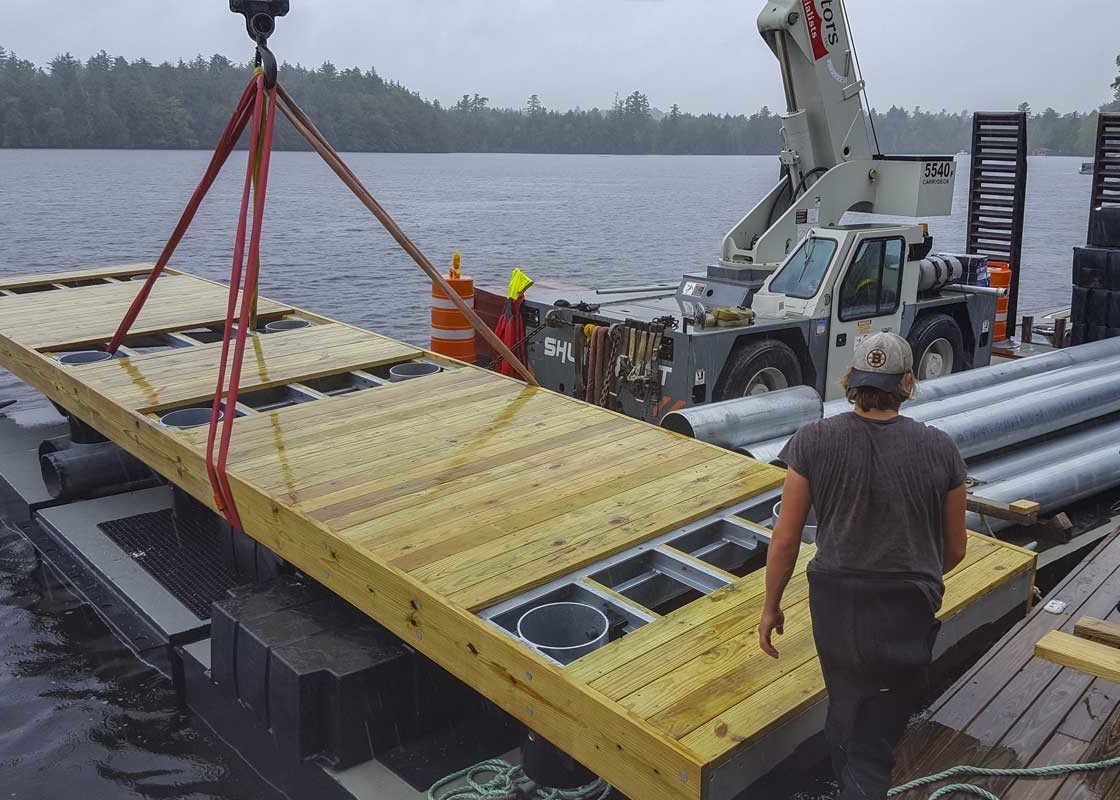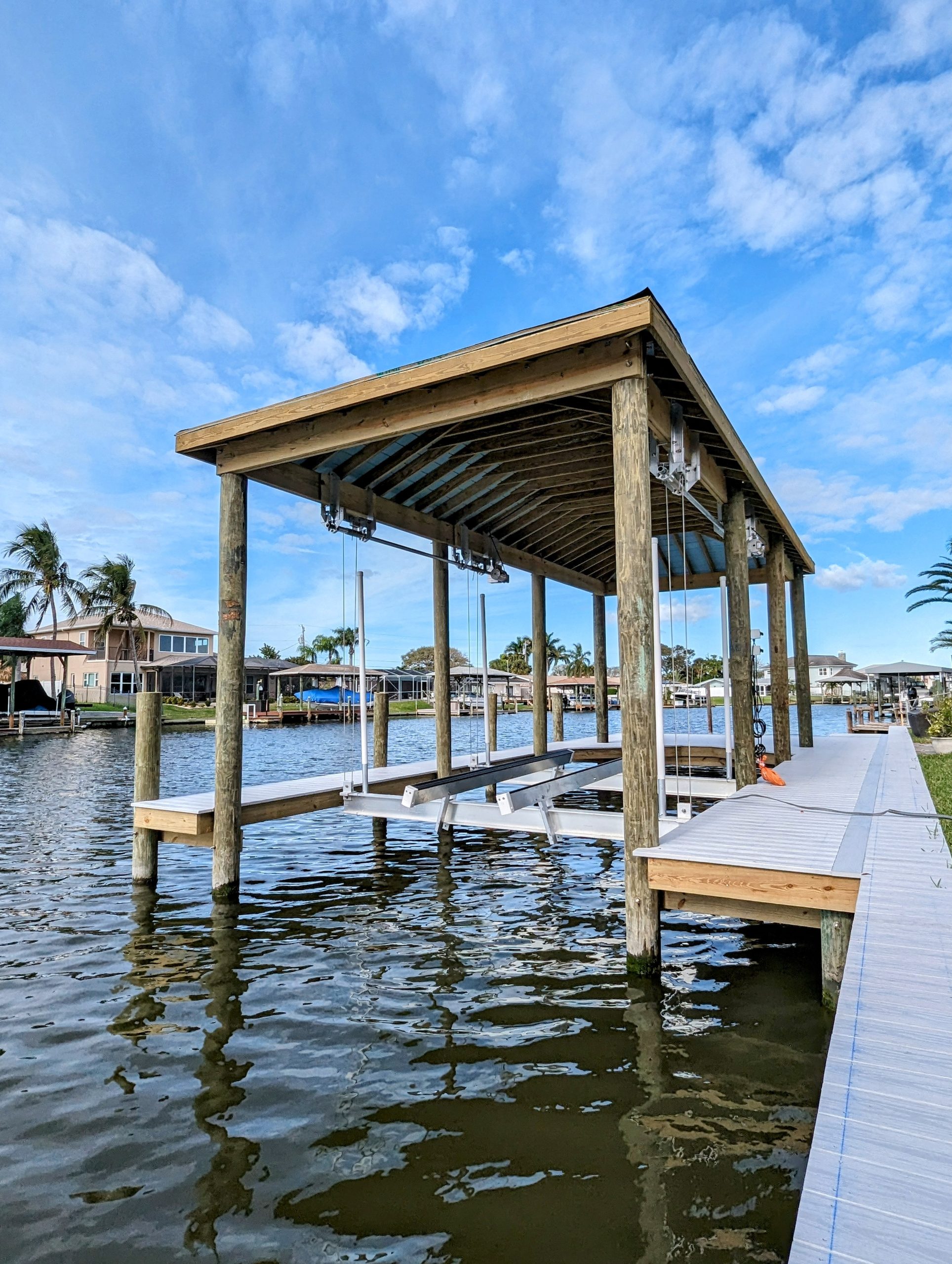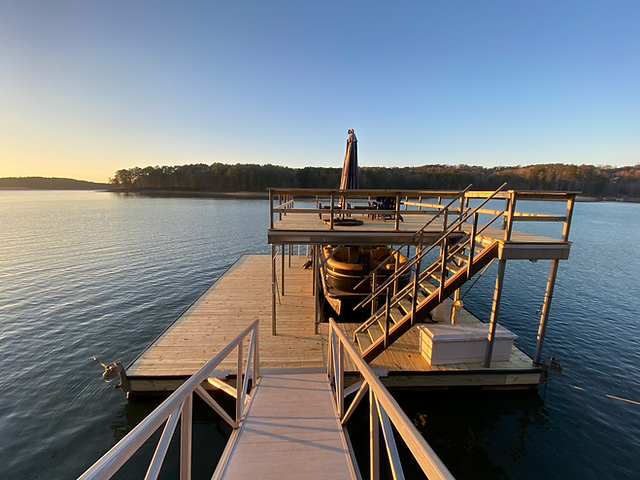Efficient Dock Repair Techniques: Guaranteeing Architectural Honesty
Ensuring the structural honesty of docks through effective repair work techniques is critical for the longevity and safety of aquatic centers. This includes a multi-faceted technique starting with extensive inspections using innovative modern technologies like sonar equipment and remotely ran automobiles (ROVs) to find both visible and concealed problems. Consequently, choosing the right fixing products, such as composite materials and corrosion-resistant alloys, is crucial for sturdiness. Structural support approaches, consisting of the implementation of cross-bracing systems and load-distribution plates, play a vital duty in mitigating anxiety points. However, the value of these strategies becomes noticeable when checking out advanced repair service techniques and preventative upkeep methods.
Evaluating Dock Damage
Analyzing dock damages is a crucial very first step in making certain the structural integrity and security of any type of docking facility. Key facets to take a look at include the dock's structure, pilings, outdoor decking, and hardware (Dock Repairs).
Structural designers or qualified inspectors typically do these evaluations making use of specialized strategies and devices. For circumstances, undersea assessments may employ sonar tools or from another location operated cars (ROVs) to spot submerged damages. Above water, aesthetic assessments are matched by utilizing moisture meters and various other diagnostic devices to discover underlying problems not instantly noticeable to the nude eye.

Choosing Repair Work Materials
Selecting the proper fixing materials is a crucial action in the dock restoration process, one that directly influences the longevity and performance of the repaired structure. Material selection must be driven by elements such as environmental conditions, load-bearing requirements, and compatibility with existing dock components. Timber is a typical selection for anchors due to its all-natural durability and aesthetic appeal. Picking the best kind of timber, such as pressure-treated lumber or normally rot-resistant species like cedar or teak wood, is vital to hold up against marine atmospheres.
Along with timber, composite materials are increasingly preferred because of their resilience and reduced maintenance needs. Compounds, generally made from a mix of plastic and timber fibers, provide excellent resistance to rot, pests, and UV damage. For metal anchors, selecting corrosion-resistant alloys such as galvanized steel or marine-grade aluminum is vital to prevent corrosion and ensure architectural stability in saline water problems.
Epoxy materials and marine-grade sealants are crucial for repairing fractures and securing joints, giving a waterproof barrier and boosting the dock's total strength. By thoroughly picking top quality materials, dock repair services can attain long-lasting results, consequently guarding against future deterioration and making sure secure, reliable use.
Structural Reinforcement Strategies
Reliable architectural support methods are important in making sure the security and durability of dock repair services. This technique is especially effective for anchors revealed to hefty tons or harsh ecological problems.
One more important technique is the application of fiber-reinforced polymers (FRP) These materials offer high strength-to-weight proportions and exceptional resistance to rust, making them perfect for reinforcing concrete or wooden docks. FRP can be used in sheets or strips and bound with epoxy resins to enhance architectural stability.
Bracing and anchoring systems additionally play an essential duty in architectural support. Cross-bracing, utilizing metal or wood light beams, can combat lateral pressures, decreasing swaying and activity. Anchoring systems, such as helical piers or driven heaps, supply a stable foundation by moving lots to deeper, a lot more stable soil layers.
Last but not least, the assimilation of load-distribution plates can assist disperse weight more evenly throughout the dock's surface, minimizing localized stress and anxiety points. These methods collectively make sure that anchors stay secure and robust, capable of withstanding the roughness of their functional environment.
Advanced Fixing Methods

An additional advanced technique involves underwater welding, which enables repair work to be Our site carried out without the requirement to dewater the area. This technique is especially beneficial for attending to structural problems in submerged dock components, guaranteeing minimal disruption to procedures. Boosted welding strategies, paired with robot systems, provide precision and reliability, thereby extending the life expectancy of the dock.
Furthermore, cathodic protection systems are implemented to avoid corrosion in metallic dock frameworks. By utilizing sacrificial anodes or impressed current systems, these techniques properly mitigate the electrochemical procedures that bring about product wear and tear.
Finally, advanced surveillance innovations, such as architectural health and wellness tracking (SHM) systems, offer real-time data on the problem of dock frameworks. These systems allow aggressive upkeep and timely interventions, ultimately making certain the long-lasting architectural stability of the dock.
Maintenance and Avoidance
Upkeep and prevention are basic ideas that underpin the longevity and safety and security of dock frameworks. Regular inspections are extremely important, permitting early discovery of deterioration, prospective weak points, and ecological effects. A proactive technique, entailing routine checks for deterioration, rot, and architectural shifts, minimizes costly fixings and prolongs the dock's functional life.
Safety nets must consist of applying safety coverings to steel components to defend against corrosion and utilizing cured wood to resist degeneration. Additionally, making certain proper water drainage and air flow can protect against water buildup, which is a typical root cause of structural degradation. Integrating top quality materials and sticking to manufacturer standards during building and construction and repair work phases additionally play important functions in boosting resilience.

Educating employees in dock upkeep finest practices makes certain constant application of safety nets. Leveraging technological advancements, such as drones for evaluations and sensors for real-time monitoring, can better boost maintenance efforts. By focusing on upkeep and prevention, dock proprietors can make certain structural integrity, functional security, and cost-efficient monitoring over the dock's life expectancy.
Final Thought
To conclude, keeping the structural integrity of aquatic facilities demands detailed dock repair work strategies. Complete evaluations using sophisticated tools reveal both visible and hid damages, while the choice of appropriate fixing materials boosts sturdiness. Implementing architectural reinforcement approaches addresses tension factors efficiently. Advanced fixing techniques, combined with normal maintenance techniques, ensure the dock continues to be safe and functional under diverse ecological problems. Embracing these approaches substantially prolongs the life expectancy and functionality of marine framework.
Making sure the architectural integrity of docks with reliable repair techniques is vital for the long life and safety and security of marine facilities.Choosing the appropriate repair materials is a critical step in the dock repair process, one that directly influences the durability and efficiency of the repaired structure.Efficient structural reinforcement techniques are vital in making sure the security and durability of dock repair services. By prioritizing upkeep and avoidance, dock proprietors can make certain architectural stability, operational safety, and cost-effective management over the dock's lifespan.
In conclusion, maintaining the structural integrity try this web-site of aquatic centers demands detailed dock repair service methods.